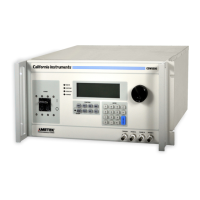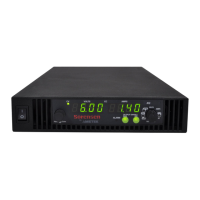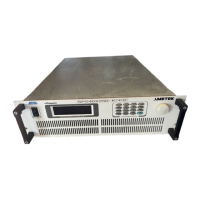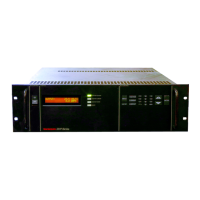User Manual California Instruments
68 CSW Series
3.11.7 WAVEFORMS Menu
Figure 3-23: WAVEFORMS menu
The WAVEFORMS menu allows selection of the wave shape for each phase individually or all
phases at once. For three phase operation the mode is determined by the phase coupling. If
only a single phase is selected in the top right corner of the display (øA, øB or øC), the selected
wave shape will be applied to that phase. If all phases are selected (phase coupling), the
selected waveform will apply to all three phases.
For single-phase versions of the CSW Series, the phase coupling is always set to phase A, so
pressing the PHASE button has no effect.
The following fields are available in the WAVEFORMS menu:
CLIP LEVEL This parameter determines the amount of total harmonic
distortion of the built-in CLIPPED sine wave waveform. The
range is 0 % through 20 % THD.
Note that changing the distortion level of the CLIPPED sine
wave while the CLIPPED sinewave is used on the output of one
or more phases, forces the output of the AC Source to be
dropped momentarily. To avoid this, make sure none of the
phases is using the CLIPPED sinewave function when
changing the clip level.
GROUP The group field displays the currently selected waveform group.
The CSW Series provides four groups of 50 user defined
waveforms each for a total of 200 waveforms. Only one group
can be active at a time however. This field only displays the
selected waveform group. It cannot be used to change the
actual group selected. Group selection must occur at power up
and is done from the INITIAL SETUP 3 screen. See section
3.11.11.3 for details.
MODE The mode field determines the operation mode of the
WAVEFORMS display screen. Available options for this field
are:
PROG: This mode is used to change the programmed
wave shape function on the selected phase. This is also the
default mode of operation.
VIEW(T): This mode can be used to display any of the
available user defined waveforms in a time domain display.
Previewing a waveform can be useful if you are unsure about
the nature of the waveform that was stored.

